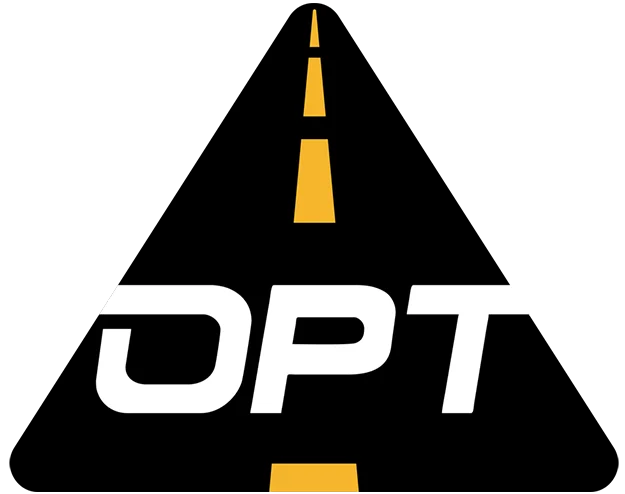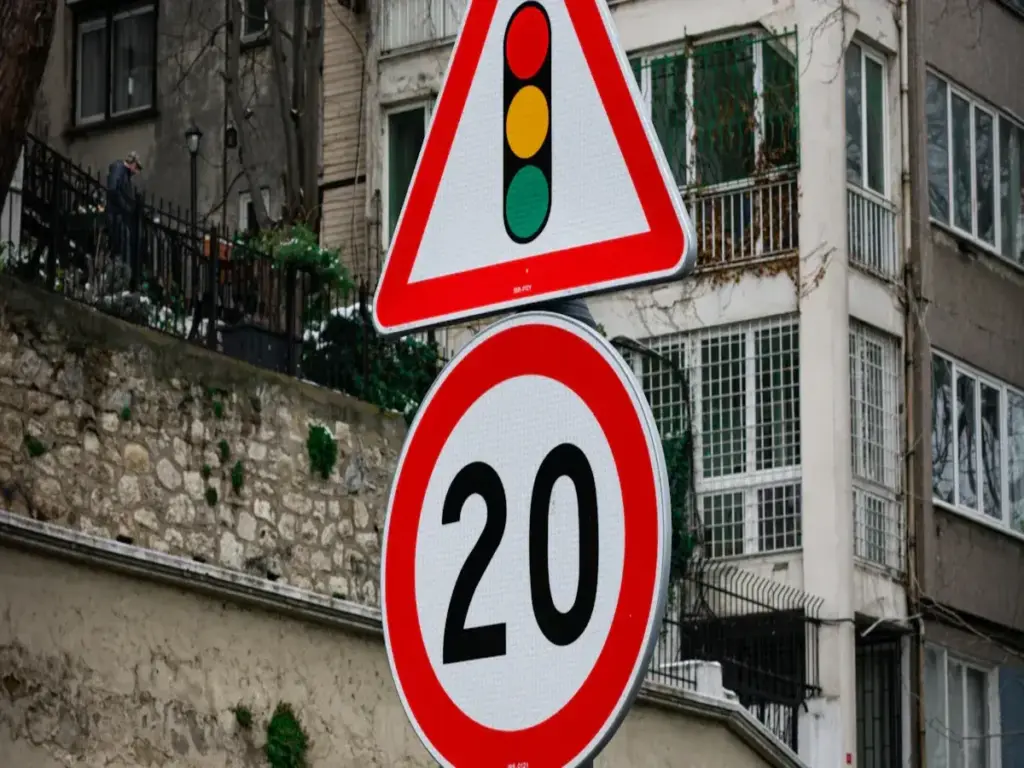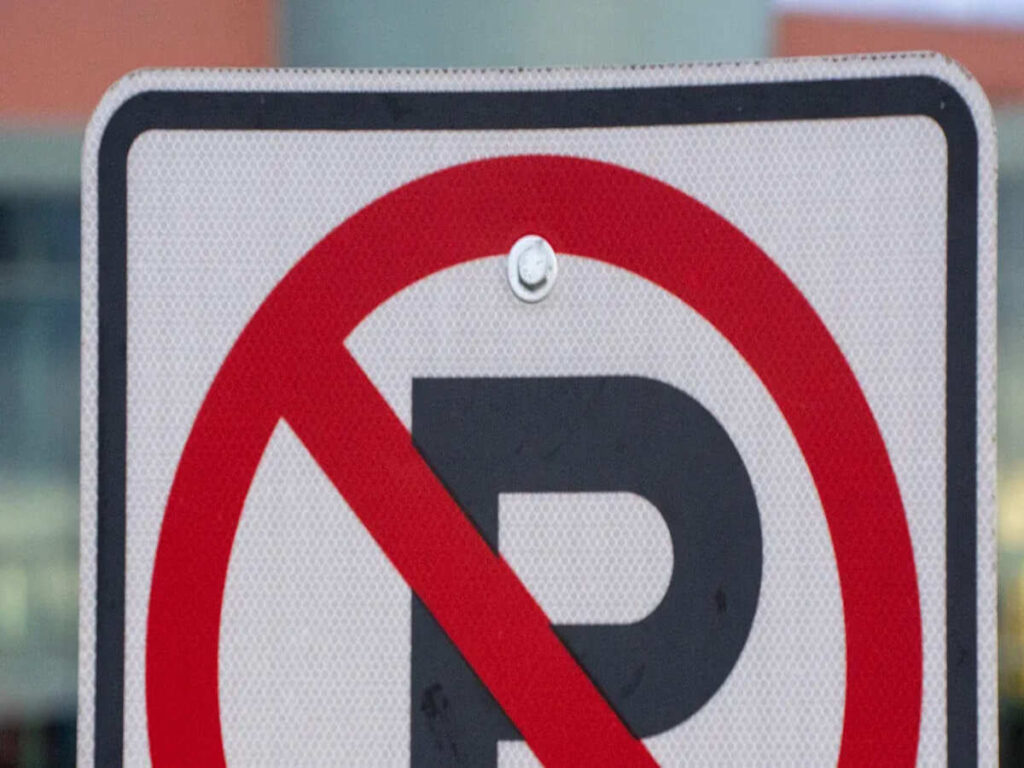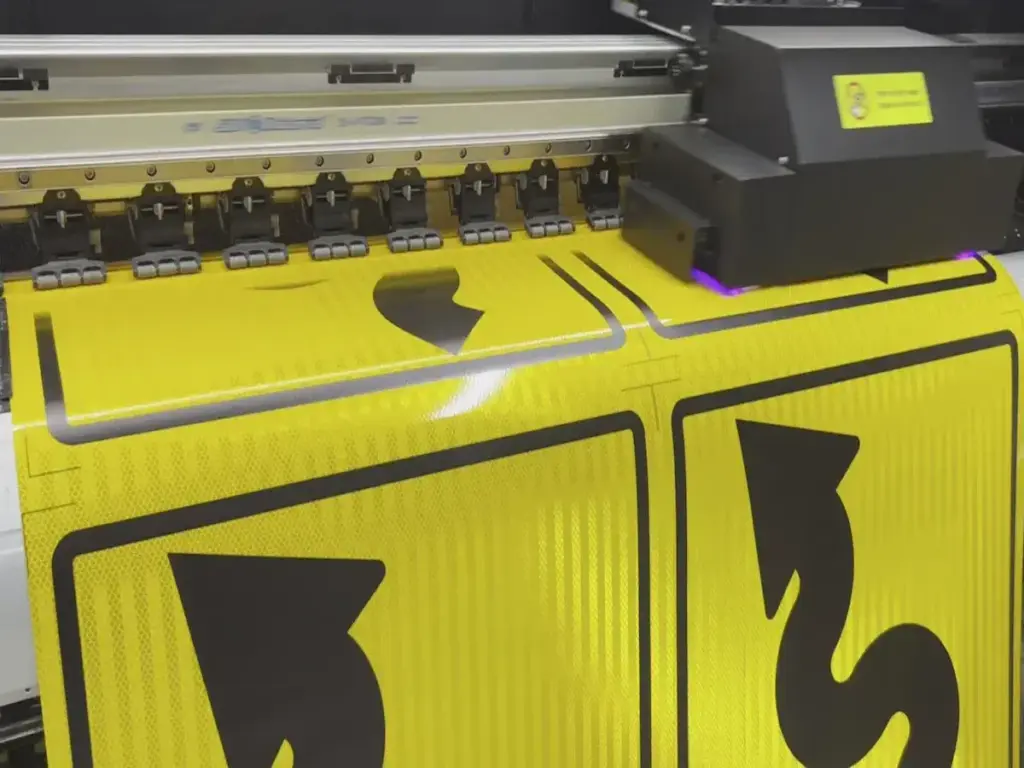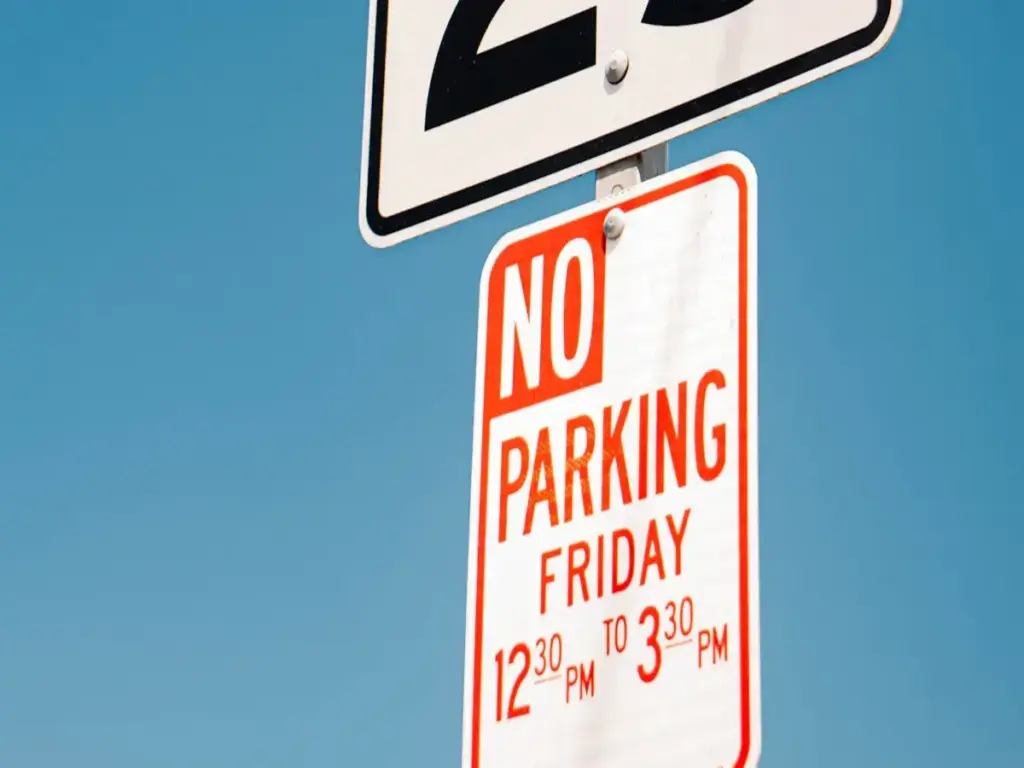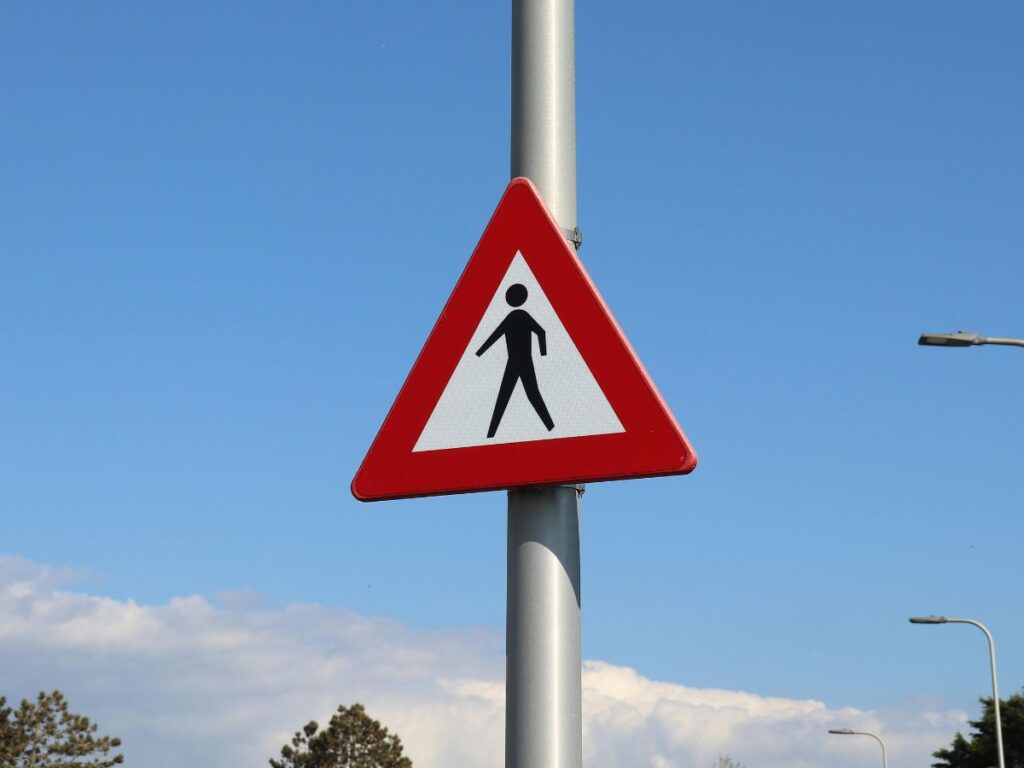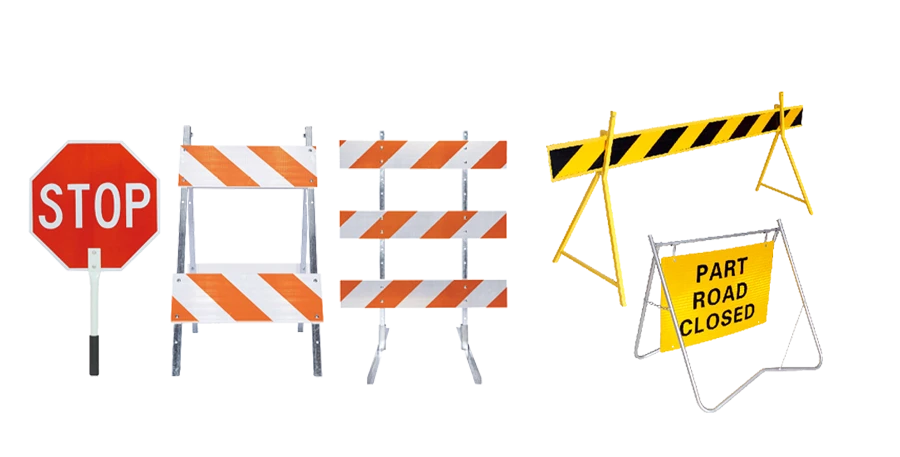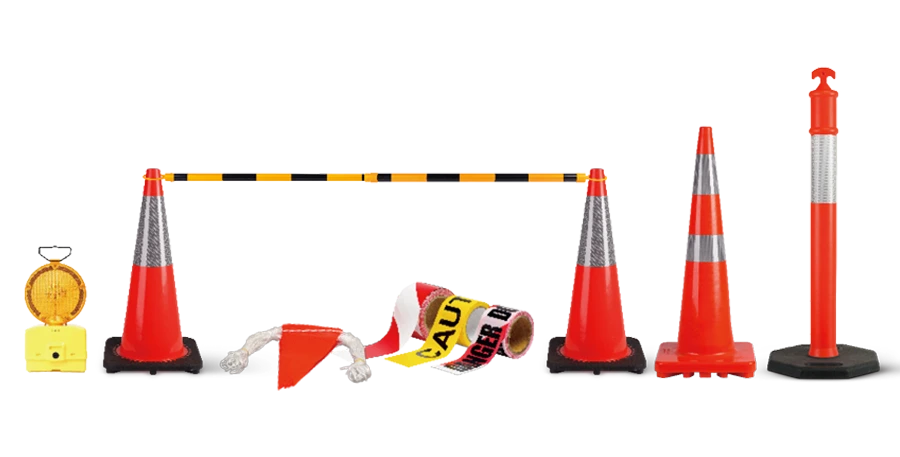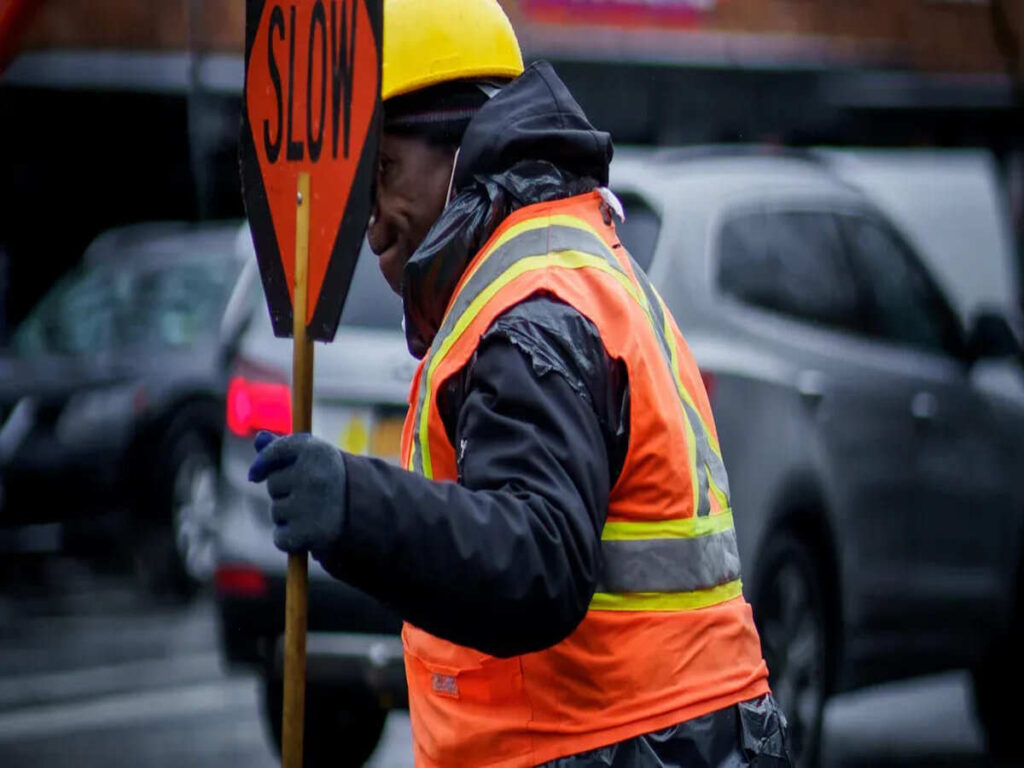
Oui, le Ministère des Transports embauche des entrepreneurs pour l'installation de panneaux routiers. De nombreuses personnes et entreprises souhaitent travailler sur ces projets. Ces projets contribuent à rendre les routes plus sûres pour tous. Le DOT s'assure que les panneaux du ministère des Transports sont placés aux bons endroits. Ces panneaux aident les conducteurs et assurent la sécurité des personnes sur la route. Les entrepreneurs ont un gros travail pour s'assurer que les panneaux sont de bonne qualité.
C'est pourquoi de nombreux entrepreneurs choisissent Produits OPTRAFFIC pour leurs besoins en signalisation routière. Nos panneaux de haute qualité sont construits pour répondre aux normes strictes établies par le ministère des Transports., garantissant durabilité et visibilité dans toutes les conditions. Que vous travailliez sur un projet d'autoroute à grande échelle ou sur l'amélioration d'une route locale, OPTRAFIC fournit des informations fiables, des solutions rentables. Contactez-nous aujourd'hui pour savoir comment nous pouvons vous aider à fournir une signalisation de qualité supérieure pour votre prochain projet.
Processus de signalisation routière DOT
Planification et coordination
Le ministère des Transports planifie soigneusement avant d'installer des panneaux routiers. D'abord, ils examinent la zone et vérifient tout ce qui est dangereux. Ils étudient comment les voitures se déplacent et quelle sécurité est nécessaire. Le DOT suit les règles relatives aux couleurs des panneaux, formes, et comme ils sont faciles à lire. Ils choisissent les designs autorisés et placent les panneaux à la bonne hauteur.. Par exemple, Signes d'arrêt sont rouges, et les panneaux d'avertissement sont jaunes. Le DOT pense aussi au territoire, comme si c'était près d'une école ou d'une route très fréquentée, pour trouver le meilleur endroit pour chaque signe.
Note: Les panneaux de signalisation doivent être faciles à voir de jour comme de nuit. Les choix du DOT Matériaux forts comme l'aluminium et utilise des surfaces brillantes pour y parvenir.
Le DOT suit la loi lors de la planification. These rules help keep department of transportation signs safe and useful.
| Type d'exigence | Description |
|---|---|
| Conception | Must follow standards set by FHA and FDOT. |
| Hauteur | Regulations set the minimum and maximum height for road signs. |
| Post Type | Utiliser specific materials and types for safety and durability. |
| Niveau de réflectivité | Signs must meet reflectivity standards for nighttime visibility. |
Contractor Collaboration
The DOT works with contractors for big jobs and signs in many places. Contractors put up signs on highways, routes de la ville, et les zones de travail. They follow these steps:
- Look at the area and check for dangers.
- Get tools and safety equipment ready.
- Check the sign for damage and test any lights.
- Measure and mark where the sign will go.
- Put up the sign the right way for its type.
- Connect wires for signs that light up.
- Make sure the sign is steady and easy to see.
- Give tips for taking care of signs, comme nettoyer ou vérifier après les tempêtes.
Les entrepreneurs utilisent leurs compétences pour s'assurer que les panneaux du ministère des Transports respectent toutes les règles.. Ils aident le DOT à assurer la sécurité des routes et le bon fonctionnement de la signalisation..
Pourquoi les entrepreneurs sont embauchés
Expertise et efficacité
Les entrepreneurs apportent des compétences particulières à chaque projet de signalisation routière. Ils savent gérer la logistique de déplacer des panneaux lourds et l'équipement. Ils comprennent également les règles pour placer les panneaux du ministère des Transports aux bons endroits.. Ces experts s'assurent que chaque panneau répond à des normes de sécurité strictes. Par exemple, ils vérifient que les panneaux sont bien visibles de jour comme de nuit. Ils utilisent les bonnes couleurs pour chaque type de panneau, suivre les directives du DOT. Les entrepreneurs veillent également à ce que les panneaux restent stables quelles que soient les conditions météorologiques.. Leur formation les aide à installer des panneaux rapidement et en toute sécurité.
| Type de compétence | Description |
|---|---|
| Visibilité | Place des panneaux là où les conducteurs peuvent les voir clairement, jour ou nuit. |
| Couleurs standards | Utilise les bonnes couleurs pour chaque signe, comme l'exige le DOT. |
| Stabilité | Installe les panneaux pour qu'ils restent droits et en sécurité, Même dans des vents forts ou des tempêtes. |
Les entrepreneurs travaillent souvent dans des zones très fréquentées, comme les autoroutes ou les rues de la ville. Ils planifient chaque étape pour éviter les problèmes de circulation et assurer la sécurité des travailleurs.. Leur expérience les aide à résoudre rapidement les problèmes si quelque chose d'inattendu se produit.
Rentabilité
L'embauche d'entrepreneurs aide le DOT à économiser de l'argent et à terminer les projets à temps. Les entrepreneurs utilisent leurs propres outils et équipes, le DOT n'a donc pas besoin d'acheter d'équipement supplémentaire. Cela permet de réduire les coûts pour tout le monde. Les entrepreneurs savent aussi travailler rapidement sans rogner sur les raccourcis. Ils suivent un calendrier et respectent les délais, ce qui signifie que les routes ouvrent plus tôt et que les conducteurs restent en sécurité. En faisant appel à des experts, le DOT peut se concentrer sur la planification et le contrôle de la qualité de chaque projet. Les entrepreneurs veillent à ce que les panneaux du ministère des Transports durent longtemps et fassent bien leur travail..
Panneaux du ministère des Transports: Implication de l'entrepreneur
Appel d'offres et sélection
Les entrepreneurs qui souhaitent travailler sur les panneaux du ministère des Transports doivent suivre les étapes suivantes :. Le DOT utilise un système d'enchères pour sélectionner la meilleure équipe. Cela permet de garantir que seuls des entrepreneurs qualifiés installent des panneaux routiers importants..
- Les entrepreneurs inscrivent leur entreprise et obtiennent un numéro DUNS.
- Ils s'inscrivent dans le système de gestion des récompenses (SAM).
- Chaque entrepreneur passe par une étape de pré-qualification auprès du DOT de l'État.. Cela vérifie leurs dossiers financiers, historique de sécurité, et emplois passés.
- Les entrepreneurs consultent le site Web du DOT pour de nouveaux projets.
- Ils obtiennent les bons cautionnements et assurances.
- Les entrepreneurs préparent un dossier de soumission détaillé. Ils peuvent aller à des réunions pour en savoir plus sur le travail.
- Ils suivent les règles des entreprises commerciales défavorisées (DBE) et les normes salariales.
- Les entrepreneurs remettent leurs offres avant la date limite.
- Après avoir envoyé les offres, ils surveillent l'état de leur offre et gèrent le contrat s'ils gagnent.
Conseil: Des entrepreneurs soucieux de la sécurité, expérience, et le coût ont de meilleures chances de gagner des emplois DOT.
Le DOT examine chaque offre de près. Ils vérifient l’expérience de l’entrepreneur, dossier de sécurité, et le prix. Le DOT veut des équipes qui connaissent les règles et peuvent terminer le travail en toute sécurité pour installer les panneaux du ministère des Transports..
Responsabilités de l'entrepreneur
Les entrepreneurs ont de nombreux emplois lorsqu'ils travaillent avec les panneaux du ministère des Transports. Ils doivent suivre des règles strictes et s'assurer que chaque panneau est sécuritaire. Le DOT souhaite que les entrepreneurs effectuent chaque étape avec soin.
| Responsabilité | Description |
|---|---|
| Installation | Vérifie l'installation, réparation, et suppression des panneaux permanents par les plans de circulation. |
| Entretien | Établit un calendrier pour entretien des enseignes et vérifie que tout est fait. |
| Contrôle de la circulation | Met en place un contrôle de la circulation sûr pour protéger les travailleurs et les conducteurs. |
| Planification d'urgence | Élabore des plans de détour et installe des panneaux temporaires pour les urgences. |
| Gestion des ressources | Manipule l'équipement, matériels, et des ressources pour les travaux de signalisation. |
| Direction de l'équipage | Diriger l'équipe de signalisation et vérifier la fabrication des panneaux. |
| Inspection | Vérifie les travaux sur le terrain et à la fin pour s'assurer qu'ils respectent les plans et les règles de sécurité. |
| Coordination des services publics | Planifie et vérifie les services publics pour arrêter les dommages pendant les travaux de signalisation. |
Les entrepreneurs doivent également suivre les Manuel sur les dispositifs de contrôle de la circulation uniformes (Mutcd) et d'autres lois. Ils veillent à ce que les panneaux réglementaires informent les conducteurs du code de la route.. Chaque panneau doit être placé là où les conducteurs peuvent le voir et connaître les règles.. Les entrepreneurs utilisent des panneaux rétroréfléchissants ou lumineux pour que les conducteurs les voient jour et nuit..
- Les entrepreneurs placent des panneaux au bon endroit pour chaque règle.
- Ils veillent à ce que les panneaux soient faciles à lire et respectent la loi..
- Ils utilisent des matériaux qui aident les panneaux à rester visibles par tous les temps.
Si les entrepreneurs ne suivent pas les règles du DOT, ils peuvent avoir des ennuis:
- Ils peuvent recevoir des amendes allant jusqu'à $15,846 pour chaque erreur.
- Le DOT peut arrêter le travail d’un entrepreneur jusqu’à ce qu’il résolve le problème.
- Les cotes de sécurité peuvent chuter, ce qui rend plus difficile l'obtention d'un nouvel emploi.
- Les entrepreneurs peuvent avoir des problèmes juridiques si des accidents surviennent à cause d'erreurs..
- Les frais d’assurance peuvent augmenter après des violations.
Les entrepreneurs qui respectent toutes les règles contribuent à assurer la sécurité des routes. Ils veillent à ce que les panneaux du ministère des Transports durent longtemps et protègent toutes les personnes sur la route..
Considérations clés pour les entrepreneurs
Conformité à la sécurité
Les entrepreneurs contribuent à assurer la sécurité des routes pour tous. Ils doivent suivre les règles de sécurité nationales lors de l'installation des panneaux routiers DOT.. Ces règles garantissent que les panneaux sont faciles à voir et durent longtemps. Le DOT utilise les règles du Manuel sur les dispositifs uniformes de contrôle du trafic (Mutcd). Les entrepreneurs doivent utiliser ces règles pour chaque travail. Les États ont besoin de programmes de sécurité routière conformes aux règles du MUTCD. Les projets bénéficiant de fonds fédéraux pour les routes doivent respecter ces normes.
| Norme/Exigence | Description |
|---|---|
| Conformité MUTCD | Les entrepreneurs doivent se conformer au Manuel sur les dispositifs uniformes de contrôle de la circulation. (Mutcd) pour l'installation de panneaux routiers. |
| Fonds fédéraux pour les routes | La conformité au MUTCD est requise pour les projets recevant des fonds fédéraux pour les routes.. |
| Programmes nationaux de sécurité routière | Les États doivent avoir approuvé des programmes de sécurité routière conformes aux directives MUTCD. |
Les entrepreneurs choisissent des matériaux solides pour que les panneaux durent plus longtemps. Aluminium laminé résiste au soleil et aux intempéries. L'aluminium anodisé a une surface résistante et semble brillant. L'aluminium réfléchissant coûte plus cher mais ne rouille pas et nécessite peu d'entretien. Les entrepreneurs vérifient si les panneaux sont faciles à voir de jour comme de nuit. Ils utilisent des équipements réfléchissants dans les zones de travail. Ils placent des panneaux là où les conducteurs peuvent le mieux les voir. Si les signes sont difficiles à voir, ils les réparent ou les déplacent.
Durabilité
La durabilité est importante pour l’installation de panneaux routiers. Les entrepreneurs choisissent des matériaux qui durent et nécessitent moins de réparations. Cela permet d'économiser de l'argent et de protéger l'environnement. Des panneaux fabriqués à partir de aluminium recyclé réduire le gaspillage. Les revêtements réfléchissants gardent les panneaux lumineux pendant des années. Les entrepreneurs planifient à l’avance pour que leur travail dure. Ils choisissent des matériaux qui résistent aux intempéries et aux dégâts. Ils facilitent également la mise à niveau des panneaux si les règles changent..
- Utilisez des matériaux recyclés ou écologiques pour les poteaux et panneaux de signalisation.
- Choisissez des revêtements qui résistent à la décoloration et à la rouille.
- Concevoir des panneaux pour un remplacement ou un recyclage facile.
- Choisissez un éclairage économe en énergie pour vos enseignes lumineuses.
Les entrepreneurs soucieux de la sécurité et de la durabilité contribuent à assurer la sécurité des routes. Ils contribuent également à protéger l’environnement. Ils s'assurent que chaque panneau répond à des normes élevées et dure de nombreuses années..
Travailler avec des fabricants de panneaux
Processus d'approvisionnement
Les entrepreneurs font équipe avec des fabricants de panneaux pour obtenir des panneaux approuvés par le DOT. Ils vérifient chaque panneau pour s'assurer qu'il est de bonne qualité. Les panneaux doivent suivre des règles strictes de sécurité et de durabilité. Les entrepreneurs recherchent des certifications comme ISO 9001. Ils vérifient également si les panneaux répondent aux normes MUTCD. Les certificats d'usine montrent que l'aluminium et les matériaux réfléchissants sont solides. Des rapports tiers prouvent que les panneaux peuvent supporter le soleil, pluie, et frappe. Les entrepreneurs visitent parfois les usines pour observer comment sont fabriquées les enseignes.. Les bons fabricants livrent les panneaux à temps et utilisent des outils numériques pour suivre les commandes.
| Méthode de vérification | Description |
|---|---|
| Certifications | Recherchez l'ISO 9001 certification et respect des normes régionales de sécurité (Mutcd, DANS 12899, GB 5768). |
| Traçabilité des matériaux | Veiller à ce que les fournisseurs fournissent des certificats d'usine pour les substrats en aluminium et la documentation sur les feuilles réfléchissantes.. |
| Rapports de tests tiers | Exiger des rapports sur les performances photométriques, résistance à l'impact, et durabilité aux intempéries. |
| Audits de production | Évaluer les conditions d'usine et les points de contrôle de qualité pendant la production. |
| Performances de livraison | Les principaux fabricants doivent maintenir des taux de livraison à temps ≥95 %. |
| Intégration du flux de travail numérique | L’utilisation d’outils numériques pour le suivi des commandes indique une maturité opérationnelle. |
Les entrepreneurs suivent ces étapes pour s'assurer que chaque panneau est sans danger pour les conducteurs.
Solutions personnalisées
Les fabricants aident les entrepreneurs à réaliser des panneaux spéciaux pour les travaux DOT. OPTRAFFIC crée des panneaux de signalisation personnalisés pour différents projets. Ils utilisent les nouvelles technologies pour rendre les routes plus sûres et les panneaux plus faciles à voir. Leur équipe suit les règles locales et vérifie la qualité de chaque panneau.. OPTRAFFIC aide également les entrepreneurs à maintenir leurs panneaux fonctionnels après l'installation.
- Panneaux de signalisation personnalisés pour projets spéciaux
- Nouvelle technologie pour une meilleure sécurité et une signalisation claire
- Concentrez-vous sur les nouvelles idées et sur des contrôles de qualité rigoureux
- Assistance complète après-vente pour que les panneaux continuent de fonctionner
Les entrepreneurs et les fabricants travaillent ensemble pour planifier et gérer les projets. Ils conçoivent des panneaux, fixer des objectifs, et faire des dessins pour les offres. Les chefs de projet vous accompagnent du début à la fin, y compris l'installation et l'entretien.
| Type de service | Description |
|---|---|
| Services de conseil | Rationaliser les autorisations, conception, fabrication, et les étapes d'installation de tout projet. |
| Services de pré-construction | Établir les concepts de conception et les exigences du projet, identifier les moyens et méthodes de construction. |
| Programme de spécification des panneaux | Transformez les dessins conceptuels en dessins de construction détaillés pour des offres et des budgets précis. |
| Conception de la valeur cible | Des solutions clé en main pour respecter le budget, intention de conception, et le branding de votre projet. |
| Gestion de projet dédiée | Communication et accompagnement à chaque étape de la rédaction à la maintenance. |
Ce travail d'équipe aide les entrepreneurs à installer des panneaux qui respectent les règles du DOT et assurent la sécurité des routes..
Le ministère des Transports embauche des entrepreneurs pour installer des panneaux routiers. Ce travail d'équipe a beaucoup de bons points:
| Avantage | Description |
|---|---|
| Économies de coûts | Les agences économisent de l'argent en partageant des outils et en travaillant ensemble. |
| Efficacité améliorée | Travailler en équipe aide à accomplir le travail plus rapidement et mieux. |
| Prestation de services améliorée | Les équipes peuvent résoudre les problèmes rapidement, ce qui assure la sécurité des gens. |
| Meilleure coordination | Le partage des objectifs aide tout le monde à vérifier les résultats et à travailler plus intelligemment. |
Des entrepreneurs qualifiés contribuent à rendre les routes plus sûres et à terminer les travaux à temps. Ils savent comment préparer les sites et contrôler la circulation pour éviter les accidents.. Les entreprises qui souhaitent des emplois DOT peuvent se tourner vers la certification DBE, trouver des opportunités de contrat, et voyez quels emplois sont à venir. Les bons fabricants d'enseignes aiment OPTRAFIC aider les entrepreneurs en renforçant, panneaux routiers personnalisés pour chaque projet.
FAQ
Comment le DOT choisit-il les entrepreneurs pour l'installation des panneaux routiers?
Le DOT examine les offres de différents entrepreneurs. Ils vérifient si l'entrepreneur a déjà effectué ce travail. Ils examinent également les dossiers de sécurité et combien cela coûtera.. Le DOT sélectionne des équipes qui respectent toutes les règles et possèdent de bonnes compétences.
Conseil: Les entrepreneurs ayant un historique de travail sûr et des offres claires sont davantage sélectionnés.
Quelles règles les entrepreneurs doivent-ils suivre lors de l'installation de panneaux de signalisation?
Les entrepreneurs doivent utiliser le manuel sur les dispositifs uniformes de contrôle de la circulation. (Mutcd). Ils doivent utiliser des matériaux approuvés pour chaque panneau. Les panneaux doivent être placés là où les conducteurs peuvent les voir facilement.
| Type de règle | Exemple |
|---|---|
| Sécurité | Conformité MUTCD |
| Matériels | Aluminium réfléchissant |
Les entrepreneurs peuvent-ils utiliser des panneaux personnalisés pour les projets DOT?
Les entrepreneurs peuvent utiliser des panneaux personnalisés s'ils respectent les règles du DOT. Les entreprises aiment OPTRAFIC aider à créer des panneaux adaptés à chaque projet. Ces panneaux doivent toujours respecter toutes les règles de sécurité.
- Formes personnalisées
- Couleurs spéciales
- Réflectivité supplémentaire
Que se passe-t-il si un entrepreneur ne respecte pas les règles du DOT?
Le DOT peut imposer des amendes ou arrêter le travail de l’entrepreneur. Les entrepreneurs pourraient ne pas obtenir plus d’emplois s’ils enfreignent les règles de sécurité.
🚨 La sécurité est très importante! Les entrepreneurs doivent toujours suivre les règles du DOT.
